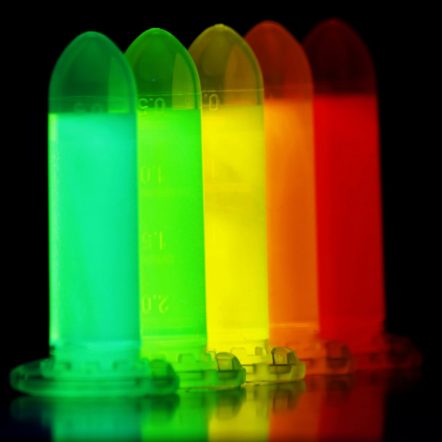Quantum dots or QDs are man-made nanoscale crystals that can transport electrons. As UV light hits these semiconducting nanoparticles, they emit light of varying colors. If these semiconductor particles are made small enough, they begin to be impacted by quantum effects which are basically effects that differ from classical physics. These effects limit the energies at which electrons or holes, which are the absence of electrons, can exist in the particles. Since energy and wavelength are related, and wavelength determines the color of light, this means the optical properties of these particles can be fine-tuned.
So, changing the size of these particles changes the color of emitted light with smaller sizes displaying narrower light waves (green) and larger particles displaying wider waves (red). But, the properties of these quantum dots can also be influenced by their shape, composition, and structure. When produced accurately, quantum dots find usage in a wide variety of areas including catalysts, electronics, photonics, information storage, imaging, medicine, sensing, and can even be used as active materials in single-electron transistors.
To read more, I would highly recommend clicking here.

